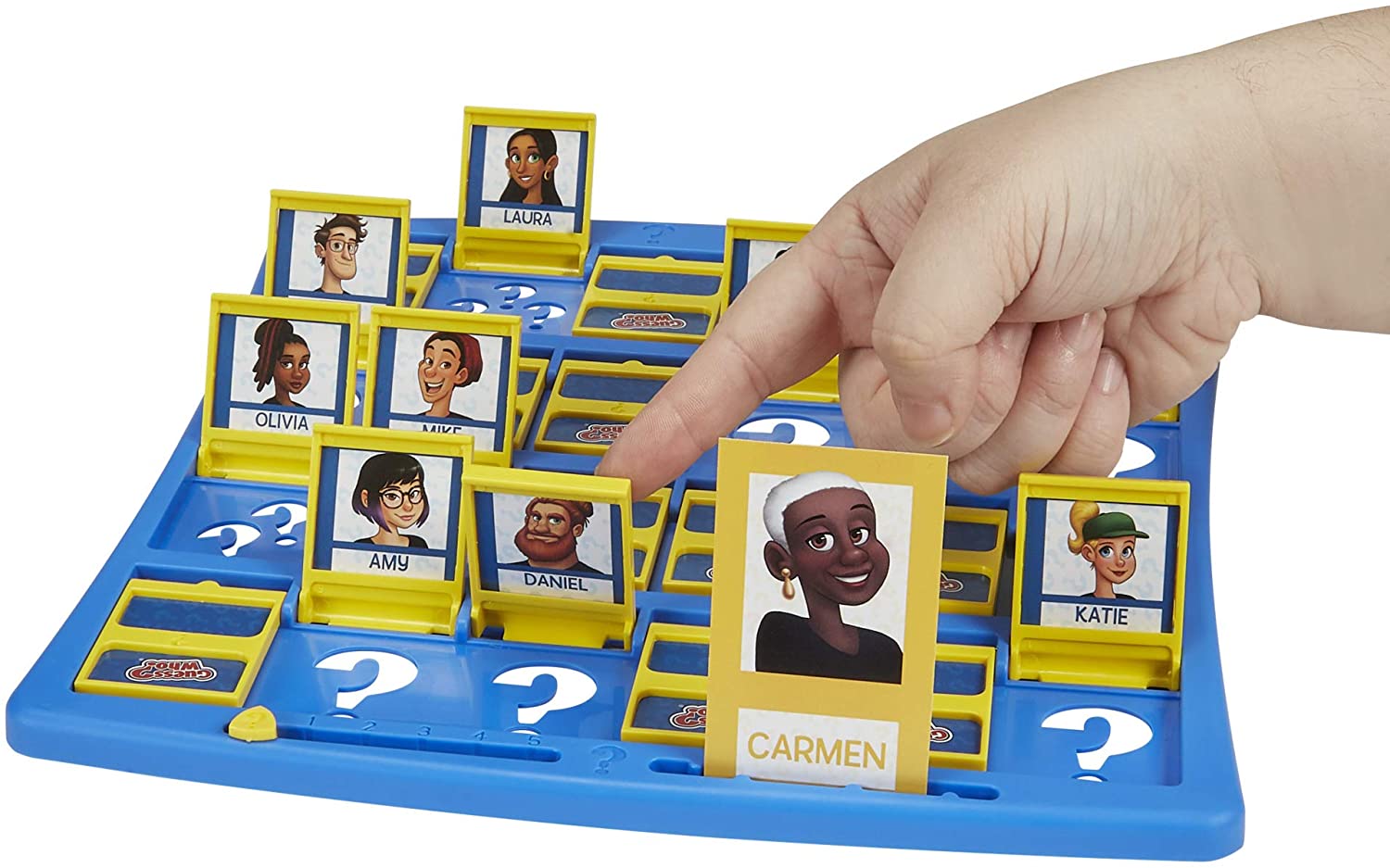0501 - Decision trees based algorithms
[Draft]

Have you ever played with the board game Guess Who? when you were a child ? The game objective is to find a particular character by asking questions related to its characteristics, like the sex, the colour of the hairs or the eyes, etc...
Decisions trees are the collections of "questions" that you pose, relative to some data characteristics (the features, in ML jargon), to arrive determining some other unknown characteristics (the labels). In the board game the unknown characteristics is the name of the character, and it is unique across the board. But more in general it can be a characteristic shared by many individuals. For example, we could play Guess Who? with the objective to determine the sex of the character (without of course the possibility to ask about it).
It then becomes obvious that the "best" question is those that can split our records the most evenly possible in groups based on the desired feature. In the example above asking if the character has barb, or earrings, would likely be good questions to ask.
Decision trees algorithms are algorithms that indeed learn from the data to ask the "best" questions to arrive to features in the shortest possible term, i.e. by posing the less amount of questions.
Decision trees are very quick and efficient methods to predict a label, either for classification or for regression, but are highly sensitive to the specific data on which they are trained. Random forests are ensemble of decision trees, each one trained on slightly different data, as the N records available for training are sampled with replacement N times, so some records may appear multiple times, some others are not used for a particular tree (this technique is called boostrapping). Also, each decision trees considers (again, randomly) only a subset of features (dimensions) from the given data during training.
In a Random Forest, the individual decision trees outputs are then aggregated and weighted to provide an output with much less variance than individual trees (the boostrap plus aggregation takes the name of bagging).
The trees that are not been used (sampled) by each decision tree can be used to provide a so called out-of-bag estimate of the validation error without the need to use a separate validation set. Cool, isn't it ?!
BetaML supports Decision Trees and Random forest respectively with the DecisionTreeEstimator and RandomForestEstimator models. As for the other supervised estimators, they can be trained with fit!(model,features,labels) and predictions can be obtained with predict(model,features).
Note that while faster implementations of DT/RF exists (for ex. the DecisionTree.jl package), BetaML RF/DT are quite unique in the way they do not assume any order in the feature dimensions and work straight away, without the need of any preprocessing, with almost any kind of data. Continuous, integer, categorical, custom types... even missing data is supported. Similarly, the kind of job (regression/classification) is automatically determined by the type of the labels, with the option to force a classification job even for numerical labels.
While RF generalise well, still a few hyperparameters are provided in order to improve regularisation:
n_trees: Number of trees in the forest [def:30]max_depth: The maximum depth the tree is allowed to reach. When this is reached the node is forced to become a leaf [def:N, i.e. no limits]min_gain: The minimum information gain to allow for a node's partition [def:0]min_records: The minimum number of records a node must holds to consider for a partition of it [def:2]max_features: The maximum number of (random) features to consider at each partitioning [def:√D,]splitting_criterion: Eithergini,entropyorvariance